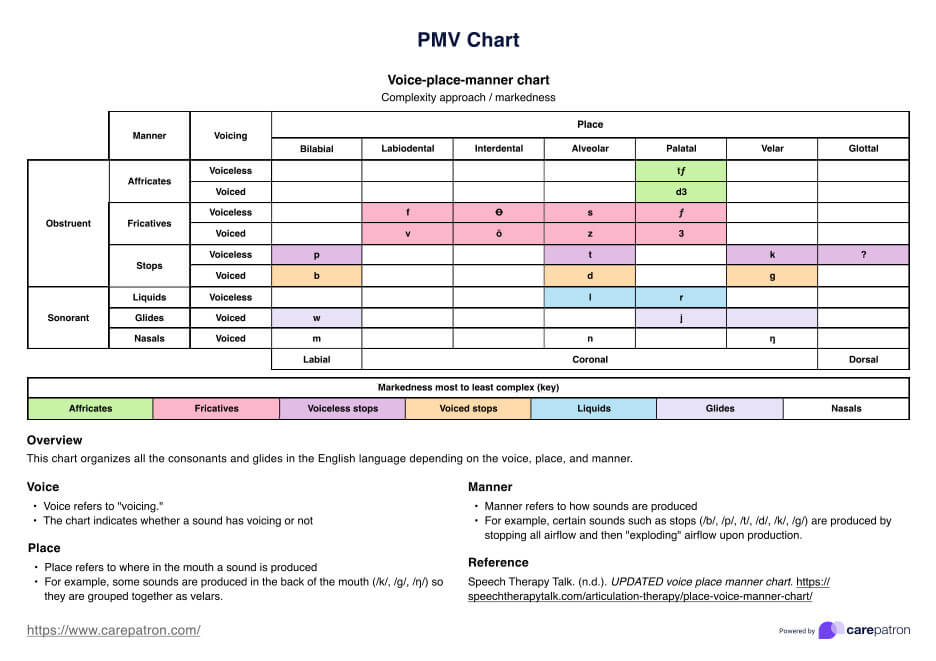The Place-Voice-Manner chart classifies speech sounds, including multiple oppositions, based on their articulatory properties, aiding therapists in diagnosing and treating phonetic and phonological disorders.

PMV Chart
Explore our free PMV Chart for speech therapy, which is perfect for therapists to assess and treat speech disorders effectively. Download now!
Use Template
PMV Chart Template
Commonly asked questions
The chart provides a detailed analysis of how and where speech sounds are produced, enabling therapists and parents to identify specific articulation errors and develop targeted interventions to correct them.
Yes, the Place-Voice-Manner chart is a versatile tool that can be effectively used by different age groups, from children to adults, to learn, analyze, and improve their speech production skills.
EHR and practice management software
Get started for free
*No credit card required
Free
$0/usd
Unlimited clients
Telehealth
1GB of storage
Client portal text
Automated billing and online payments











